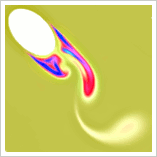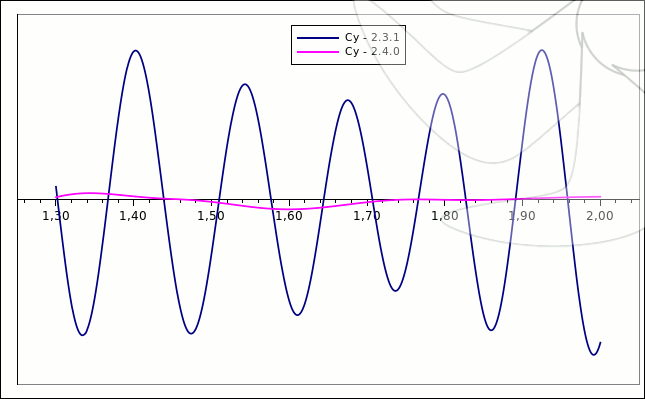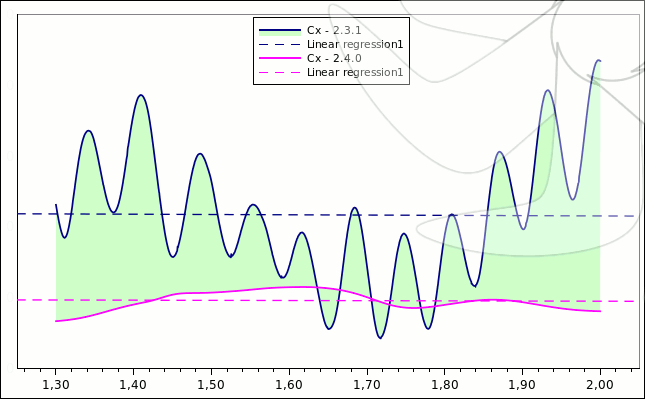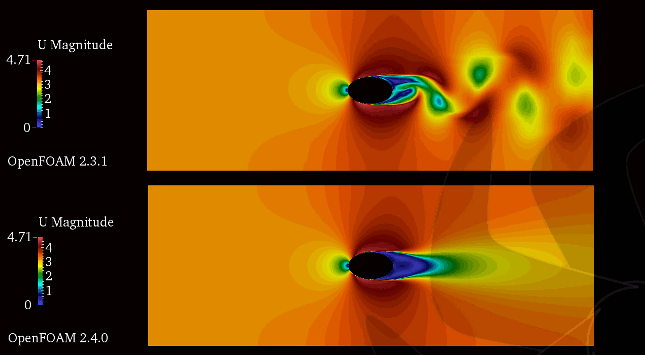|
| Ship's Log - Software |
| 05/08/2015 |
|
According to the notes in OpenFOAM source code, the latest version which is 2.4.0 as today has a significant update for the implementation of this turbulence model. Original note in the "kkLOmega.H (OpenFOAM-2.4.0.tgz)" is as follows:
This turbulence model is described in: Walters, D. K., & Cokljat, D. (2008)...
kkLOmega is one of the most interested turbulence model due to it's potential for my interests. I am using 2.3.1 and to that date I have somehow satisfied with the performance of the model. But it must be noted that I have always used this model on steady state with SIMPLE algorithm. Good results with wrong implementation! Welcome to the weird world of CFD... There are also some papers in similar situation such as [2], [3]. For trying to understand the effect of this implementation difference on the results, the default example case files supplied with the OpenFOAM have been used. All settings were equal except grad schemes. At first I have tried to solve 2.4.0 case with 2.3.1 grad schemes but it diverges and used the original settings. A summary of results can be seen below.
Figure.1) Calculated lift coefficients for both cases, sampling between 1,30 to 2,00 seconds.
Figure.2) Calculated resistance coefficients for both cases, sampling between 1,30 to 2,00 seconds. The average difference is about 4,3%
Figure.4) A screenshot from the animation. To view the animation you can click on image or here.
Next Stage: kkLOmega implementations vs naca0012
References1. http://www.openfoam.org/version2.1.0/physical-modelling.php2. Validation of a Transition Model for the Du91-W2-250 Airfoil, 2013, Y. Zhang - T. Gillebaart - G. J.W. van Bussel - H. Bijl 3. 2D Numerical Investigation of the Laminar and Turbulent Flow Over Different Airfoils Using OpenFOAM, 2012, H. Rahimi - W. Medjroubi - B. Stoevesandt - J.Peinke 4. http://fossies.org/diffs/OpenFOAM/2.3.1_vs_2.4.0/src/turbulenceModels/incompressible/RAS/kkLOmega/kkLOmega.H-diff.html |



